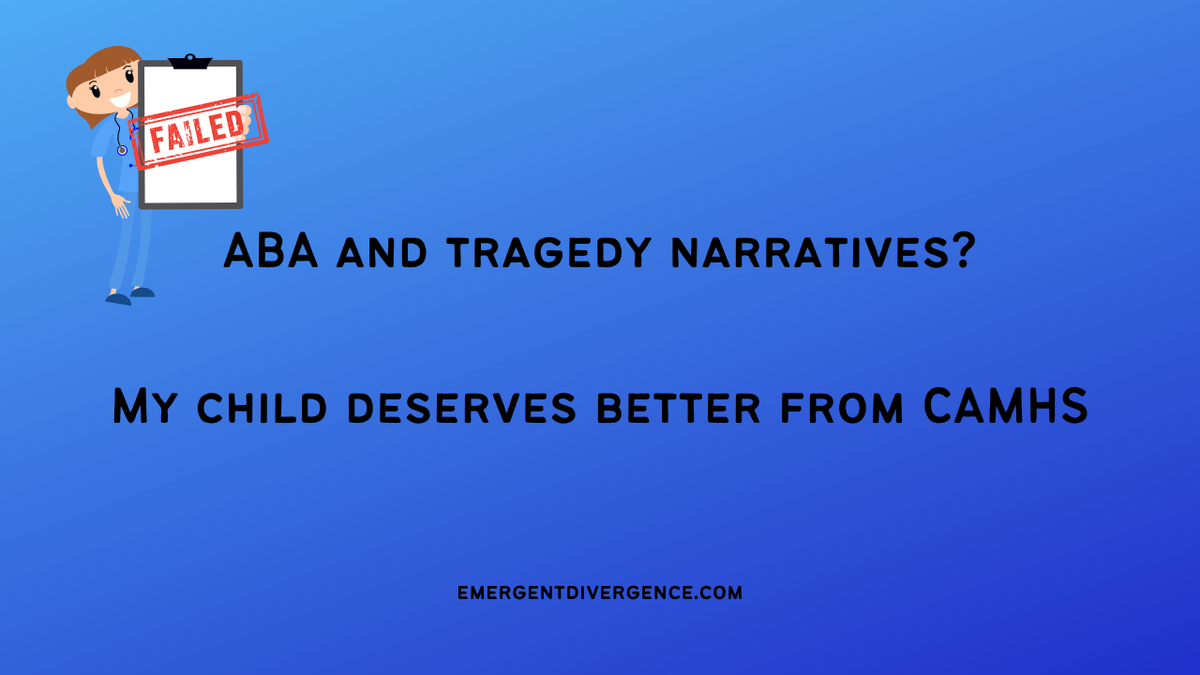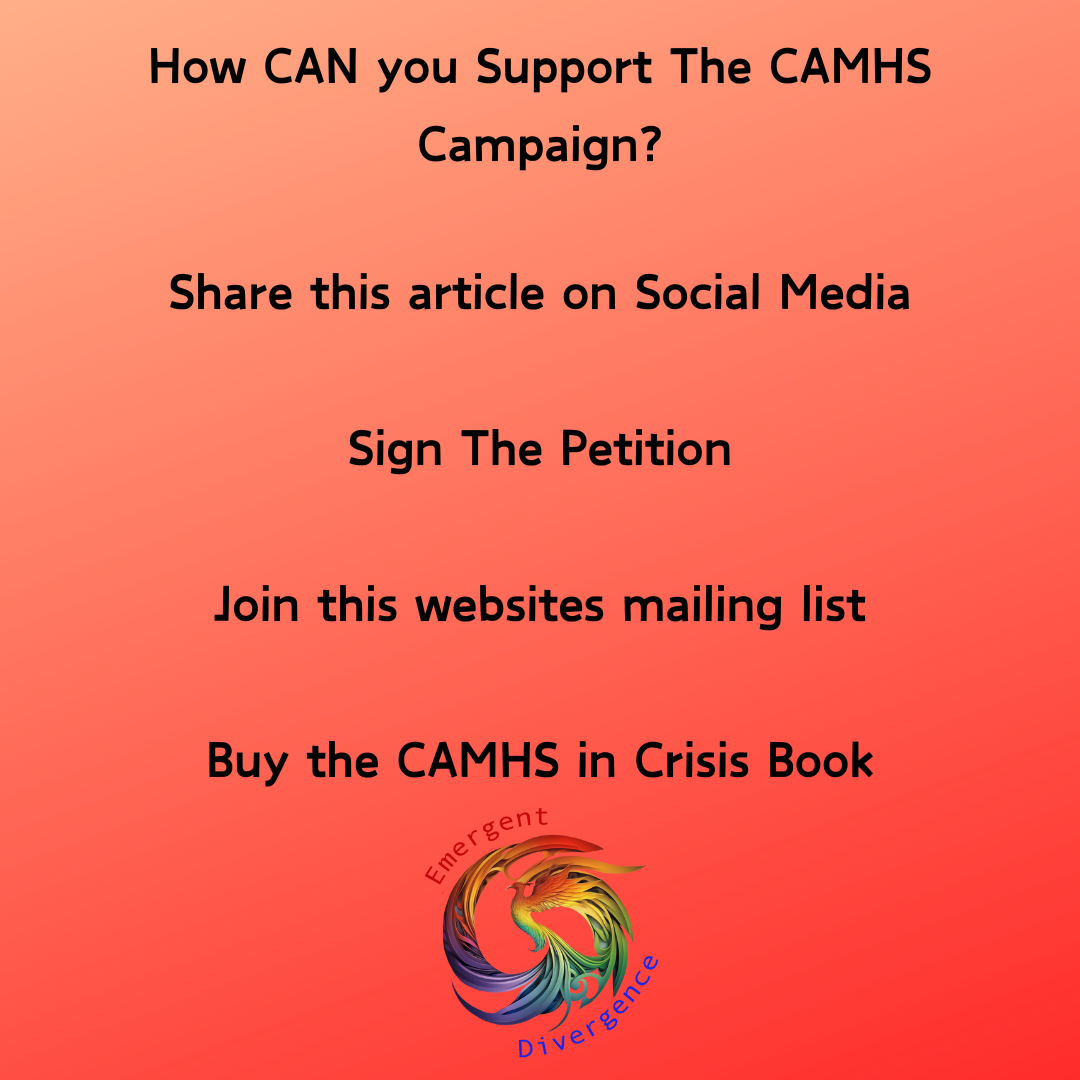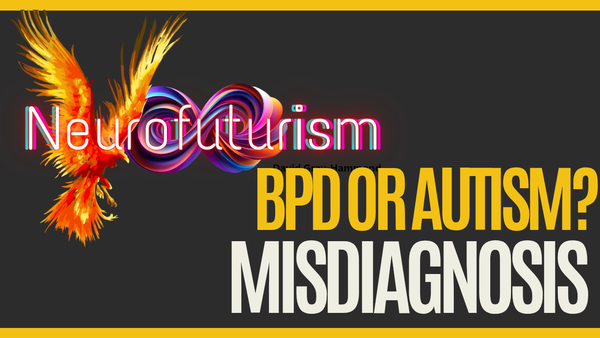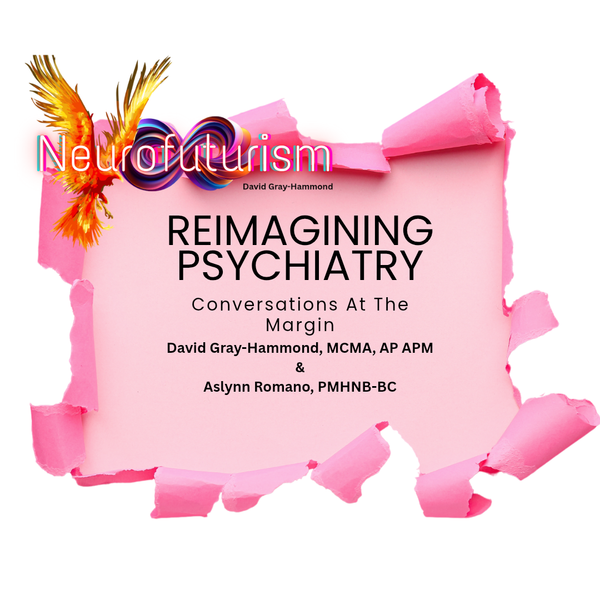Autism: What CAMHS Really Say
Child and Adolescent Mental Health Services (CAMHS) fails autistic kids. Their focus on deficits, not strengths, and support of harmful therapies shows they need a radical overhaul.

It would be unsurprising at this point for me to say I've run out of things to say about Child and Adolescent Mental Health Services (CAMHS). I have been writing about them for well over a year as we campaign to change services. It is disappointing with the sheer amount of writing I have done, there is still much more to be said. You can check out a lot of the things I have discovered already over at the CAMHS page of this website. Before we move onto the main article, remember you can support this campaign by clicking the following buttons.
How do CAMHS and the NHS describe autism?
In order to give a picture of what is actually being said about autism, I have taken a sample of writings on NHS websites for various NHS trusts. The trusts I have included are:
- Oxford Health Child and Adolescent Mental Health Service
- Hampshire Child and Adolescent Mental Health Service
- Dorset Core-Child and Adolescent Mental Health Service
- North Derbyshire Child and Adolescent Mental Health Services
My aim is to capture the themes and ways they discuss autism, and how this may impact on the services they are providing.
What are the pathology paradigm and neurodiversity paradigm?
The first question that stood out to me, is what paradigm these services approach autism with. In the context of neurodivergence, there are two big paradigms. The Pathology Paradigm, and The Neurodiversity Paradigm. The two are quite self-explanatory, but for those who may not have heard of them before, you can understand them as follows:
- The Pathology Paradigm
- The belief that humans can be measured by a statistical norm, and any deviation from that norm is pathological (a disorder or illness). See Stimpunks definition here.
- The Neurodiversity Paradigm
- The acceptance of each individuals neurology being individual and specific to them, and as such a natural part of biodiversity as opposed to being a disorder or illness. Nick Walker's Definition is here, and in her book Neuroqueer Heresies.
Autism is a lifelong condition that affects how a person perceives and relates to the world around them. The term ‘spectrum’ is used as no two people are the same. All people with Autism share certain strengths and difficulties, but these will affect each individual in different ways.
Oxford CAMHS
This was probably one of the more palatable descriptions of autism. Despite this, they are definitely approaching from a pathology paradigm and medical model basis. This stands in opposition to much of the Autistic community.
Autism is a neurodevelopmental disorder with a biological basis that is present at birth – children affected by autism can show characteristics before they are three, and parents may recognise from an early stage that something is wrong in their child’s social or language development.
Dorset CAMHS
This quote will be unsurprising to most who have dealt with CAMHS. phrases like "neurodevelopmental disorder" and "something is wrong" fit very neatly into the pathology paradigm and directly empower deficit and tragedy narratives that surround autism, often causing a great deal of harm to Autistic people.
In general descriptions of autism were similar to these, some were better than others, but roots of the language used were distinctively medicalised and pathological.
How do CAMHS describe the traits of autism?
The thing that stood out to me the most was the emphasis on social issues and communication. There were statements that Autistic people lack empathy, struggle to understand the feelings of others, and that they are unaware or disinterested in other people.
Difficulty in understanding others’ feelings (referrer may describe it as “lack of empathy”
Oxford CAMHS
Difficulties making and keeping friends and romantic relationships
Hampshire CAMHS
Children with ASD can also lack awareness of and interest in other children. They can find it hard to understand other people's emotions and feelings, and have difficulty starting or joining in with conversations.
Dorset CAMHS
They may show differences in how they interact with other people, such as how they show interest in other people’s experiences and interests and how they recognise and respond to other people’s emotions. They also may find social situations and forming friendships difficult.
North Derbyshire CAMHS
I would note that all of these descriptions place the responsibility onto the Autistic child to approach that statistical average rather than describing why these differences are observed.
There are two important pieces of knowledge here. First is the theory of monotropism. Monotropism explains why an Autistic child may appear to be unaware of other children by explaining that they tend towards hyper-detailed attentional flow states rather than surface level attention. Despite this, many Autistic people engage in a form of parallel play called "body-doubling" where we socialise by performing separate tasks in each others company. More on Monotropism at the video below.
The second piece of information that is significant here is The Double Empathy Problem, as proposed by Damian Milton. This suggests that rather than lacking empathy, different experiences of society and culture make it difficult for people of different neurocognitive styles to fully empathise with each other. They simply have no point of reference within each others experience. This may explain communication breakdowns and difficulty forming friendships.
What resources are provided for Autistic children?
A lot of the resources provided are quite generic with some "self-help" material thrown in. As an independent advocate the lack of meaningful resources screams "you're on your own", which can be all too familiar for Autistic people and their families. What stood out the most was that none of these services easily signposted towards Autistic-led initiatives and projects. The best people to learn from are Autistic people, and yet they seem to be excluded from this conversation. The offering from Hampshire CAMHS is a Acceptance and Commitment Therapy (ACT) based self-help book that makes no mention of autism. ACT is based on Cognitive Behavioural Therapy (CBT) which many Autistic people do not find helpful.
Dorset CAMHS even links out to an organisation that offers Applied Behavioural Analysis (ABA)
From short-term skills such as toilet training through to full-time ABA programmes, we’ve helped hundreds of children over the years. Many families have told us that seeing their child make progress, learn to communicate and knowing how to manage their behaviours has been invaluable.
Child Autism UK
There has been a great deal of discussion and evidence to show that ABA is harmful, even abusive, for Autistic people, such as Shkedy et al (2021). When CAMHS is recommending ABA, they have gone to far.
Conclusions
CAMHS are deeply entrenched in the pathology paradigm. They lack the insight of Autistic people and scholars, and provide resources that can even be harmful such as ABA. All of this in the absence of meaningful support for Autistic people. To me, even this one article demonstrates that CAMHS need to overhaul their entire approach to autism. We can not, and should not, be satisfied with the current state of affairs. Autistic children and young people deserve better than they ways they are described and treated by professional services.



